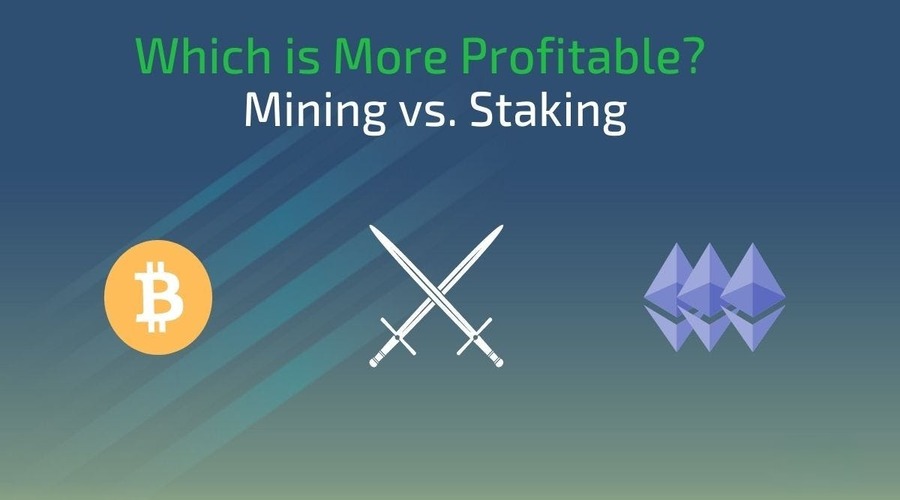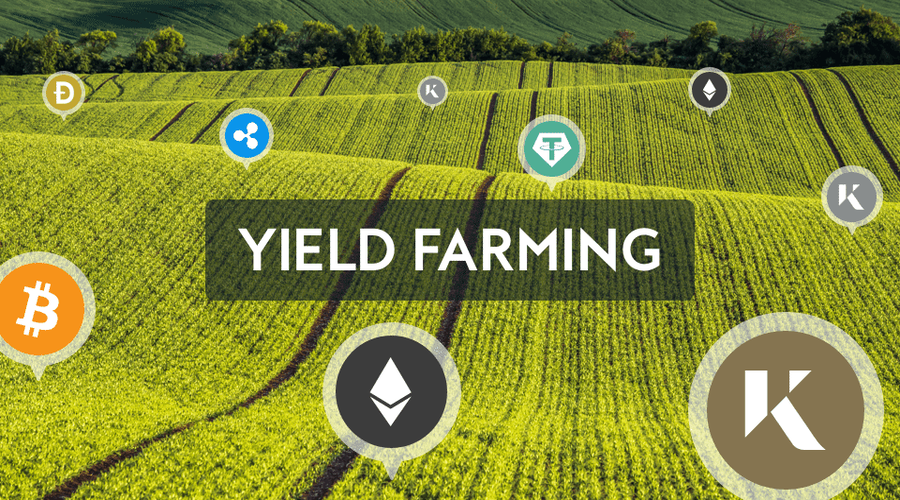Cryptocurrency has been making waves in the financial world, with many people investing in it to make a profit. However, there are various ways to make money with cryptocurrency, and two of the most popular ways are staking and mining. Both of these methods require different skills, knowledge, and equipment, and the question is, which is more profitable? In this article, we’ll explore the differences between staking and mining, their advantages and disadvantages, and which one is more profitable.
What is Staking?
Staking is the process of holding cryptocurrency in a wallet or a network to support its operation and validate transactions. In staking, investors lock up their cryptocurrency coins or tokens for a specific period to receive rewards. These rewards are usually in the form of additional coins or tokens, and they are proportional to the number of coins staked.
Advantages and Disadvantages of Staking
The advantages of staking include:
- Lower energy consumption: Staking requires less energy compared to mining, which requires powerful computers and a lot of energy to solve complex mathematical problems.
- Lower startup costs: Staking requires less initial investment compared to mining, which requires expensive equipment and maintenance costs.
- Stable income: Staking provides a steady and predictable income for investors, depending on the cryptocurrency and the amount staked.
- Passive income: Staking rewards investors for holding their coins, which means they can earn income without actively trading or managing their investments.
The disadvantages of staking include:
- Lower rewards: Staking rewards are usually lower compared to mining rewards, especially for smaller investors.
- Risk of losing coins: Staking requires investors to hold their coins in a wallet or network, which exposes them to the risk of losing their coins in case of hacks or network failures.
- Limited liquidity: Staked coins are usually locked up for a specific period, which limits investors’ liquidity and ability to trade or sell their coins.
What is Mining?
Mining is the process of solving complex mathematical problems using powerful computers to validate transactions and create new blocks in a blockchain network. In mining, investors compete to solve these problems, and the first one to solve them receives a reward in the form of newly created coins or tokens.
Advantages and Disadvantages of Mining
The advantages of mining include:
- Higher rewards: Mining rewards are usually higher compared to staking rewards, especially for larger investors or mining pools.
- Control over the mining process: Mining allows investors to have more control over the mining process, including the choice of equipment, software, and mining pool.
- Possibility of capital gains: Mining allows investors to sell their mined coins or tokens for a higher price in the future, which can result in capital gains.
The disadvantages of mining include:
- High energy consumption: Mining requires powerful computers and a lot of energy to solve complex mathematical problems, which makes it environmentally unfriendly and costly.
- High startup costs: Mining requires expensive equipment and maintenance costs, which makes it less accessible to small investors.
- Unstable income: Mining rewards are unpredictable and can vary depending on the cryptocurrency, the mining difficulty, and the market conditions.
- Technical knowledge: Mining requires technical knowledge and expertise to set up and manage the mining process, which makes it less accessible to non-technical investors.
Staking vs. Mining: Which One is More Profitable?
The profitability of staking and mining depends on various factors, including the cryptocurrency, the amount invested, the staking or mining difficulty, and the market conditions. Generally, mining is more profitable for larger investors or mining pools, while staking is more profitable for smaller investors.
For example, let’s say you have $10,000 to invest in cryptocurrency, and you’re considering staking or mining. If you choose staking, you can stake your $10,000 in a cryptocurrency that provides a staking reward of 10% per year. This means you’ll earn $1,000 in staking rewards per year, or $83.33 per month. On the other hand, if you choose mining, you’ll need to buy expensive mining equipment, pay for electricity and maintenance costs, and compete with other miners to solve mathematical problems. If you’re successful, you can earn a higher reward, but it’s also possible to earn nothing if you’re not successful.
Therefore, the profitability of staking and mining depends on your investment goals, your risk tolerance, and your technical knowledge. If you’re a small investor who wants to earn a steady and predictable income without much effort, staking may be more profitable. If you’re a larger investor who wants to take on more risk and has technical expertise, mining may be more profitable.
Conclusion
Staking and mining are two popular ways to make money with cryptocurrency, but they require different skills, knowledge, and equipment. Staking is a simpler and more accessible way to earn a steady and predictable income, while mining is a more complex and risky way to earn a potentially higher reward. Ultimately, the choice between staking and mining depends on your investment goals, your risk tolerance, and your technical expertise.
FAQs
Q: What is staking in cryptocurrency?
A: Staking is the process of holding a certain amount of cryptocurrency in a wallet and locking it up to support the network and verify transactions. In exchange for staking, participants receive rewards in the form of additional cryptocurrency.
Q: What is mining in cryptocurrency?
A: Mining is the process of using computational power to solve complex mathematical equations that verify transactions on the blockchain. Miners compete to solve these equations, and the first miner to solve the equation is rewarded with new cryptocurrency.
Q: Which is more profitable, staking or mining?
A: It depends on the cryptocurrency and the current market conditions. In some cases, staking can be more profitable because it requires less computational power and energy consumption than mining. However, mining can be more profitable in other cases if the value of the cryptocurrency is high and the cost of energy is low.
Q: Is staking or mining more accessible to beginners?
A: Staking is generally more accessible to beginners because it requires less technical knowledge and equipment than mining. With staking, users can simply hold their cryptocurrency in a compatible wallet to begin earning rewards. Mining, on the other hand, requires specialized hardware and software, as well as technical knowledge and experience.
Q: Can staking and mining be done at the same time?
A: In some cases, yes. Some cryptocurrencies allow users to stake and mine simultaneously, while others require users to choose between staking or mining. It’s important to research the specific cryptocurrency and its requirements before attempting to stake or mine.




